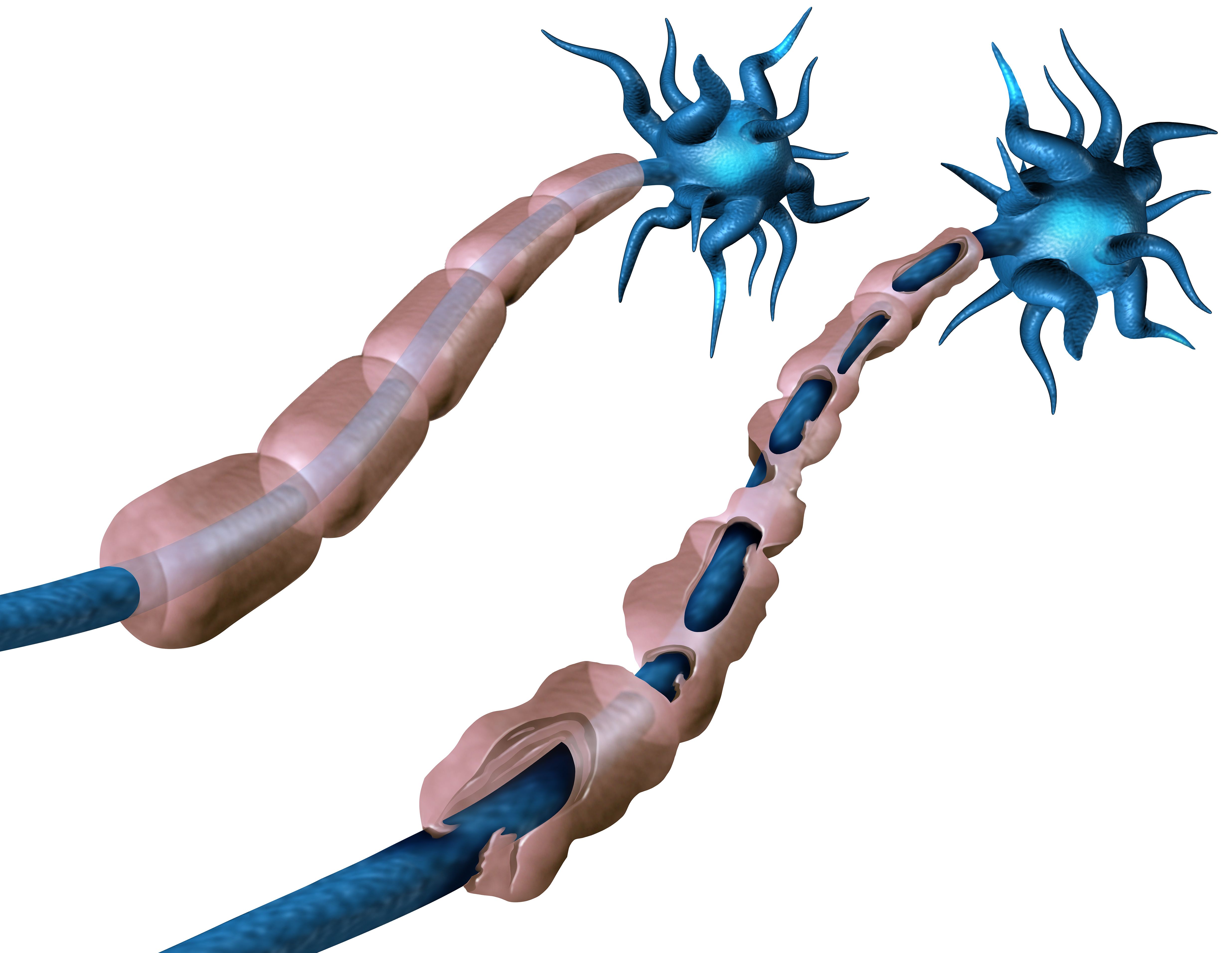
About 10 years ago, neurologists defined a new condition called radiologically isolated syndrome (RIS). Magnetic resonance imaging (MRI) images show that people with RIS have the same kind of damage to the protective, myelin sheath that surrounds the axons of nerve and brain cells characterizes with multiple sclerosis (MS) have, but they don’t have symptoms of the disease. Like many conditions that arise from incidental findings from imaging tests, RIS stirred up a slew of research and clinical questions. Most obviously, how many, if any, of the people with RIS will go on to develop MS? Is RIS a “silent” precursor to MS or does the demyelination have a different cause and possibly a different course? Can researchers and doctors identify who will — and who won’t — develop MS with imaging tests and lab values? And how might RIS be monitored or treated to prevent the development of MS?
The questions still far outnumber the answers, but some researchers are looking for them and making some headway in figuring RIS out. There are currently eight RIS studies listed in the clinicaltrials.gov, the comprehensive database of clinical trials maintained by NIH. Two are randomized, placebo-controlled treatment trials, one of Aubagio (teriflunomide) and the other of Tecfidera (dimethyl fumarate).
An international study published in 2014 showed that about a third (34%) of RIS patients developed symptoms within five years of being diagnosed and that the risk was higher for men, people diagnosed at a younger age, and those with injured myelin — lesions, as researchers call them — in the spinal cord.
Now the results of a study that looked at RIS patients a decade out from when they identified are available. Christine Lebrun-Frenay, M.D., Ph.D., who is the principal investigator of the Aubagio RIS trial, and her colleagues reported in the Annals of Neurology in June that about half of the RIS patients included in their study had the kind of “clinical event” that typifies MS within 10 years. A clinical event was defined as an acute or progressive neurological episode that is localized to the optic nerve, brainstem, cerebellum, spinal cord, or long sensory or motor tracts that is followed by symptom improvement or the onset of a clinical symptom that got worse over a 12-month period. As in the earlier study of the five-year period, Lebrun-Frenay and her colleagues found that the risk of a clinical event increased with younger age at RIS diagnosis. They also found that presence of lesions in the spinal cord and the lower, infratentorial part of the brain were associated with greater chance of clinical symptoms. Two other risk factors were cerebrospinal fluid test indicative of demyelination and an MRI scan during follow-up that shows lesion-associated inflammation typical of MS (gadolinium, an MRI contrast agent, “lights up” when the inflammation is present, so the finding is referred to as a “gadolinium-enhancing lesion.”)
“Whether to treat RIS subjects off-label with DMTs (disease-modifying treatments) is a matter of matter,” note the investigators. Interestingly, when they looked at RIS patients who were treated off-label with DMTs, they did not find a significant association with a clinical event.
"condition" - Google News
July 16, 2020 at 08:02PM
https://ift.tt/2WrwNSK
Radiologically Isolated Syndrome: Understanding of Demyelinating Condition Grows But Slowly - Managed Healthcare Executive
"condition" - Google News
https://ift.tt/2W6ON50
https://ift.tt/2L1ho5r
Bagikan Berita Ini

















0 Response to "Radiologically Isolated Syndrome: Understanding of Demyelinating Condition Grows But Slowly - Managed Healthcare Executive"
Post a Comment